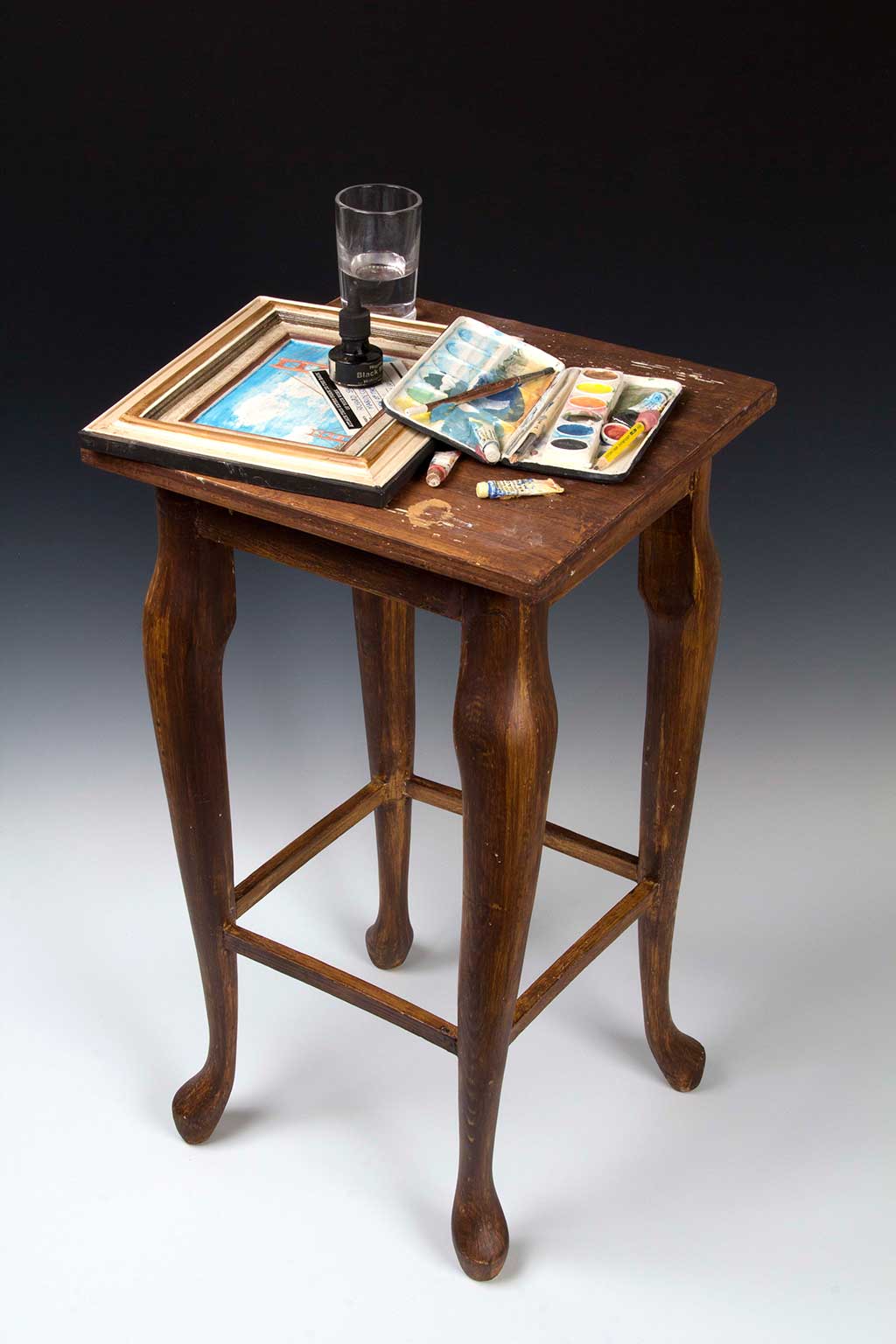Richard Shaw
Richard Shaw (born 1941) is a ceramicist who creates realistic and intricate work that usually consists of objects of the everyday. Using the visual illusion technique, trompe l’oeil, Shaw is most known for his sculptures in which his assemblage of ceramic made found objects form together to create figures, still lifes, and self referential arrangements.
Born in Hollywood, CA, to a cartoonist father and artist mother, Shaw was influenced by the arts at an early age. Shaw moved to San Francisco where he attended the San Francisco Art Institute in 1965 and received his B.F.A. He later attended the University of California, Davis where he received his M.F.A. Starting off as a painter, Shaw transitioned to ceramics during his studies and began to explore and develop his techniques with clay. He has created an abundance of works including thrown and hand built objects, casted porcelain figures, and overglaze transfer decals. Shaw has taught at the San Francisco Art Institute (1966-1987) and then proceeded to teach at the University of California, Berkeley.
Shaw has been the recipient of the National Endowment for the Arts Grant, The National Endowment for the Arts Crafts Grant, and the Visiting Artist Grant, Manufacture National De Sevres, Paris, France. Shaw’s work can be found in the collections of the Whitney Museum of American Art, NY, the de Young Museum, San Francisco, the Los Angeles County Museum of Art, and more.
